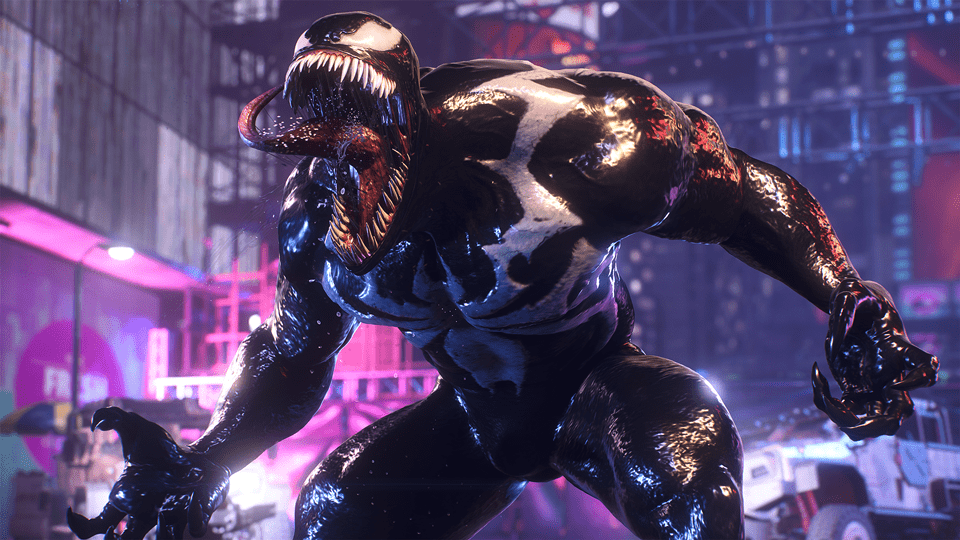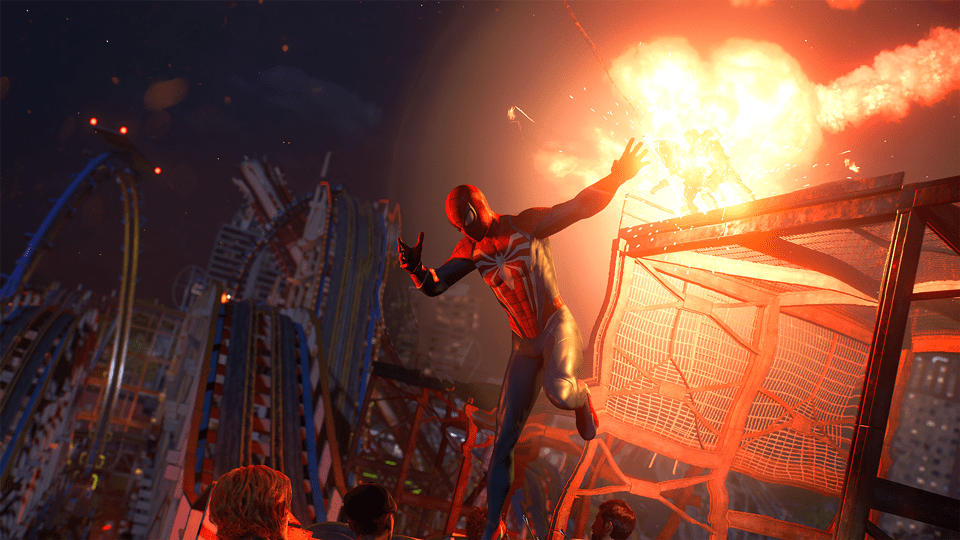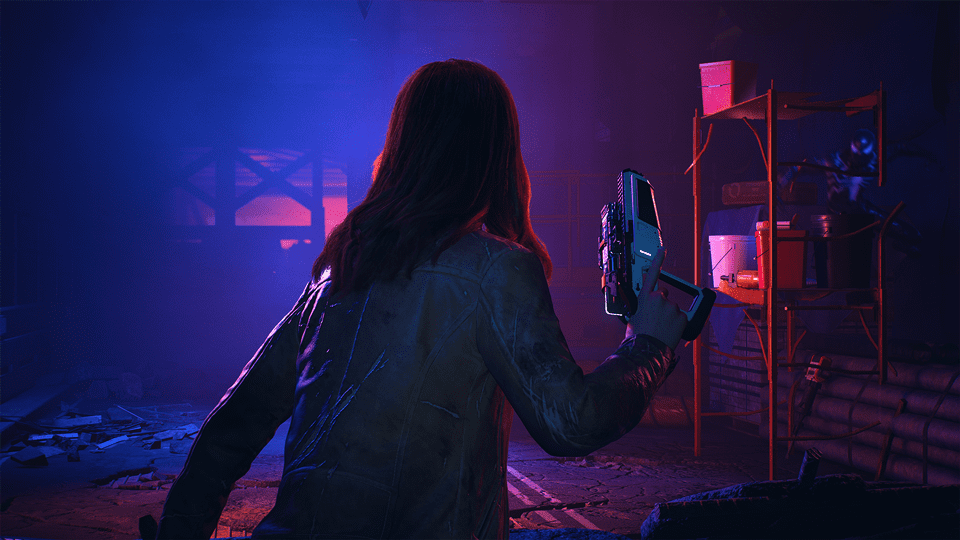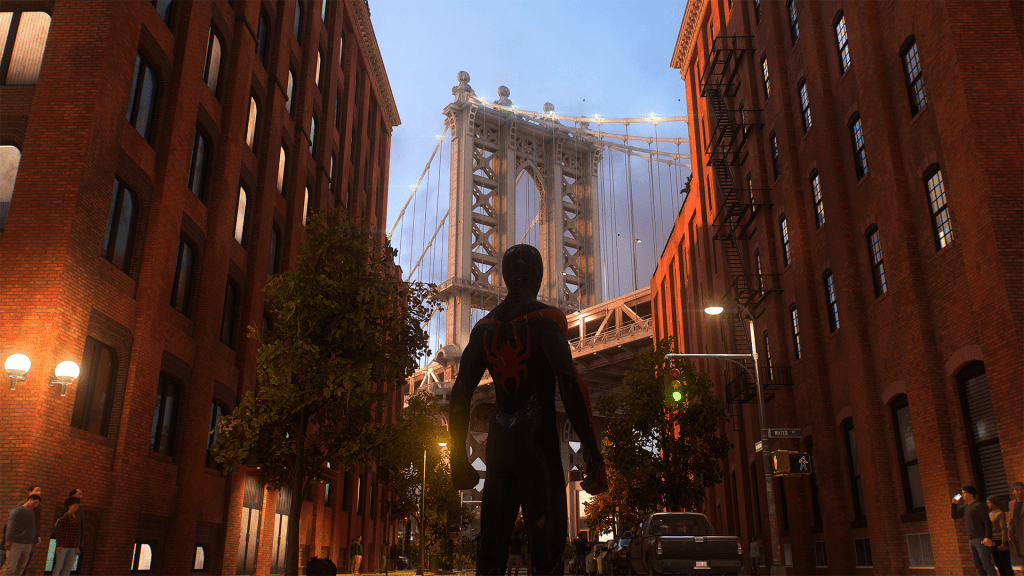“Anyone can be Spider-Man.”
That sentiment, often attributed to creator Stan Lee in some form, has always been the core of what makes the character — perhaps the world’s most famous superhero — so accessible. It’s the idea that, by donning the mask, anyone could step up and be Spider-Man, regardless of their race or gender. It became the central thesis for the excellent 2018 film Into the Spider-Verse, which widely popularized not just Miles Morales as the web-head, but a slew of variants from across the multiverse.
But it’s also not entirely true, at least not in video games. Since the dawn of Atari, there have been dozens of Spider-Man games, and despite the occasional gem, most developers have struggled to embody what makes the wall crawler work. It isn’t about power fantasy or the rogue’s gallery, it’s about the little things. It’s about being that person behind the mask — whoever they may be.
That’s what 2018’s smash hit Marvel’s Spider-Man got correct, and it’s what makes its sequel, 2023’s PlayStation 5 exclusive Marvel’s Spider-Man 2 the pinnacle of Spider-Man storytelling. (No, seriously).
Developed by Sony-owned developers Insomniac Games, Marvel’s Spider-Man 2 embodies all the hallmarks of the Spidey experience — frenetic set pieces and super heroics, the personal strife of daily life, and the heart that ties them all together — more cohesively than any game before it and, arguably, better than the films or modern comics have too.
Following the events of both the 2018 title and its sequel, 2020’s Spider-Man: Miles Morales, the game picks up with a tale of two spiders, with both veteran Peter Parker and newbie Morales working together to tag team crime in New York City. In true Spider-Man fashion, both are reeling from multiple personal tragedies: Peter, having lost Aunt May at the hands of the Sinister Six, and Miles, having lost both his father and childhood friend, Phin, in the transition from his origin story to solo outing. Their interpersonal dynamic is the crux on which the game is built, both mechanically and narratively, and it’s what elevates the game where it could otherwise feel rote.
Not even a super-powered beatdown will keep these kids from their phones.
Captured on PlayStation 5
The story bounces between the two, letting players switch on the fly between the characters to progress along their individual and shared threads. Peter acts as Miles’ mentor and gets to exist firmly in a space where the movies (interested only in the drama) and the comics (interested only in sadism) have always refused to let him be. He’s got a healthy, functional relationship with Mary Jane Watson, a burgeoning reporter for the Daily Bugle, and although he’s struggling to maintain a job, he’s relatively well adjusted… for now.
Morales, despite suffering immense loss, is also on a good track. He’s working on his college admissions essay with the help of his Spider-tutor and has finally gotten a hang of the superhero schtick. It’s all going well for the duo until a new threat emerges, a seemingly unstoppable killer named Kraven, appears out of the blue on a mission to have the perfect hunt, leaving a trail of super-powered bodies in his wake. There’s also a certain symbiote inching its way into their lives that will instantly flag to anyone even remotely familiar with Spider-Man lore where the story is heading.

It’s us. Hi! We’re the problem, it’s us.
Captured on PlayStation 5
And it’s here where Insomniac shows its true strength as developers. Even when taking inspiration from well-worn stories that have been depicted ad nauseum across comics, TV, and film, the team manages to find the perfect balance in remixing elements, changing history, and weaving together multiple stories in a way that feels inherently fresh. Untethered from endless continuity with a focused lens on these particular Spider-folk, the game can pull inspiration from iconic arcs like the origin of Venom and “Kraven’s Last Hunt,” while maintaining unexpected twists and impactful moments. And by balancing deftly between Peter and Miles, players can experience both the operatic drama and friendly neighborhood antics that define the character without the forced whiplash and bloat of a 30-hour game endlessly heaping more on an individual character.
This is all essential given that, from a mechanical standpoint, there’s almost nothing very new here. The 2018 game famously lifted wholesale the fluid combat mechanics of the other big superhero series, Rocksteady’s Arkham trilogy, trading in Batman’s billionaire kit for webbing. The benefit here is once again that dichotomy between Spider-Men. Players can shift at any time between the two with an in-game mobile app, and often team up with AI-controlled partners. Peter is the weaker of the two and, until his symbiote powers come into play, the less interesting to play. Miles has all his electrified “venom” powers (no, not that Venom; It’s confusing) from the last game, making him the powerhouse for at least the first third of the game.

Pictured: a normal ride at Coney Island.
Captured on PlayStation 5
Combat consists of using punches, webbing, and dodges, paired with each individual’s unique powers and a shared set of tech to seamlessly beat the living hell out of goons in a fluid ballet of violence. At normal difficult, there’s almost no major threat to the average player once they learn the rhythmic nature of the game, balancing attacks with timed dodges and parries from visual tells, and the game only occasionally throws more complex enemies into the mix that require specific tactics to defeat. It plays almost identically to the previous titles, although combining both game’s heroes provides some freshness, and there’s little done to innovate in this regard. Like many recent Sony first-party sequels (God of War: Ragnarök and Horizon: Forbidden West) much of what’s presented here is an iterative update for the mechanics, fine tuning and streamlining the most annoying bits from previous games and adding a little flair.
There’s also the prerequisite stealth options which — and this cannot be stressed enough — serve zero purpose for Spider-Man. As with most games, the choice to stick with stealth attacks will almost aways slow down the gameplay and result in most players triggering fisticuffs just to get back to the action. Thankfully, the team at Insomniac seem to have realized this, creating very few scenarios where the stealth is forced outside of mini-game sequences and, of course, Mary Jane.
The one universal truth among gamers is that all lamented the Mary Jane Watson portions of 2018’s game. Plodding in execution and pace, they served only to show how mundane a Spider-Man game could be without Spider-Man. Thankfully, the developers have taken note and, although they haven’t omitted alternative character sections, they have substantially improved them. How? Well, Mary Jane’s got a gun. Of course, it’s a stun gun — she’s no Lethal Protector — but the inclusion of some offensive mechanic makes MJ’s sections much more bearable to play, and dare I say, fun? Especially once she gets some upgrades, MJ’s sections lean into Insomniac’s pedigree as the creators of the gunplay-heavy Ratchet and Clank series, giving her kickass autonomy with shooting sections that feel satisfying to play, especially as pulling the trigger on the DualSense controller provides an impactful crunch. In fact, the game could use more of them. There are other guest characters to helm as well, but for the sake of spoilers, let’s just stick to the fact that these portions of the game are massively improved in terms of gameplay and their contribution to the narrative.

MJ channeling her inner Ellen Ripley.
Traversal too, is more of the same, but that’s hard to knock when swinging around the city as Spider-Man feels this damned good. Although the game’s map is now expanded beyond Manhattan isle to include truncated facsimiles of the outer boroughs (WTF is “Downtown Queens?”), zipping around at breakneck speed is more exhilarating than ever. Utilizing the PS5’s internal solid-state drive, players can seamlessly fast travel at the touch of the map once they’ve spent enough time in each neighborhood. And although it means the loss of the endlessly entertaining sequences of a masked up Spidey taking the subway, it shows once again that Insomniac are one of the few developers capable of showing off the flashy speeds of an SSD. And although it makes the larger map somehow feel smaller, the density of detail crammed in each city block helps make the world feel alive.
That liveliness is apparent in both the visuals and the motion-captured performances. Even when maniacally whipping through midtown on a spider’s thread, it’s hard not to give into the urge to regularly stop and soak in the glitz of the current gen graphics. In Fidelity mode, the game runs at 4K resolution with full raytracing on display. In layman’s terms, that means sexy clouds and lighting effects reflecting off surfaces in real time. Imagine clinging to a skyscraper’s glass façade and seeing your reflection, and the entire city’s, projected back. That fidelity takes a minor hit in Performance mode, which dials back the glam for a steadier framerate, which would normally be the preferred method for a game that requires a certain level of speed. For those fortunate enough to own a VRR (variable refresh rate) enabled TV or monitor, the ultimate option is a mix between the two with a mode that features an uncapped frame rate while shifting the resolution as needed to maintain the raytracing effects. If you’ve got that, you probably know, and it makes for one of the most technologically astonishing experiences in modern gaming.

Miles admiring the yard space in New Jersey.
Captured on PlayStation 5
But bells and whistles aside, what makes the game so special — even among other Spider-media — is its ability to let players relish the minutiae. Like Stan said, the beauty of Spider-Man is being him, and while Peter’s sections mostly push the narrative forward in operatic ways, the Miles Morales sections make up the soul of the game in meaningful ways. Much of his storyline is centered around the “friendly neighborhood” part of Spider-Man and its here where the immersion and length provided by the video game medium set this title apart from the print and movies. Whether it’s helping a same-sex high school couple go to homecoming or tracing Harlem’s musical history and defending it from those who hope to co-opt it, there’s an inclusivity and realness to Miles’ story that comes through moment-to-moment that’s unparalleled in most games.
[Spoiler warning] One particular side quest that illustrates this best is a small one. Tasked with finding a missing grandfather, players must track the man across Brooklyn at the behest of his granddaughter and caretaker. It culminates not in an action set piece, but a quiet moment where Miles sits with an elder battling dementia, ruminating in Prospect Park at the place he proposed to his late wife. Reflecting on how these memories will soon be lost to him, it’s a stark reminder to Miles (and the player) that this world is populated by real people and their experiences, and that is worth fighting for.

They got all the places that go on postcards right.
Captured on PlayStation 5
It’s thoughtfully crafted moments like this, alongside the hyper-polished if not revolutionary gameplay, that elevated Marvel’s Spider-Man 2 above many other single-player experiences as well as most other Spider-Man media. That isn’t meant to take away from the achievements of successful works like Across the Spider-Verse, but for those who are more than a little tired of the multi-versal overload of today’s entertainment landscape, where even great stories require ripping through the spacetime continuum to find something worth telling, it’s comforting to know that there’s room for spider-stories told on the ground level. Marvel’s Spider-Man 2 excels at weaving together a web of poignant and personal tales that everyone can relate to. Anyone can be Spider-Man.
Marvel’s Spider-Man 2 will be released on PlayStation 5 on Oct 20.
